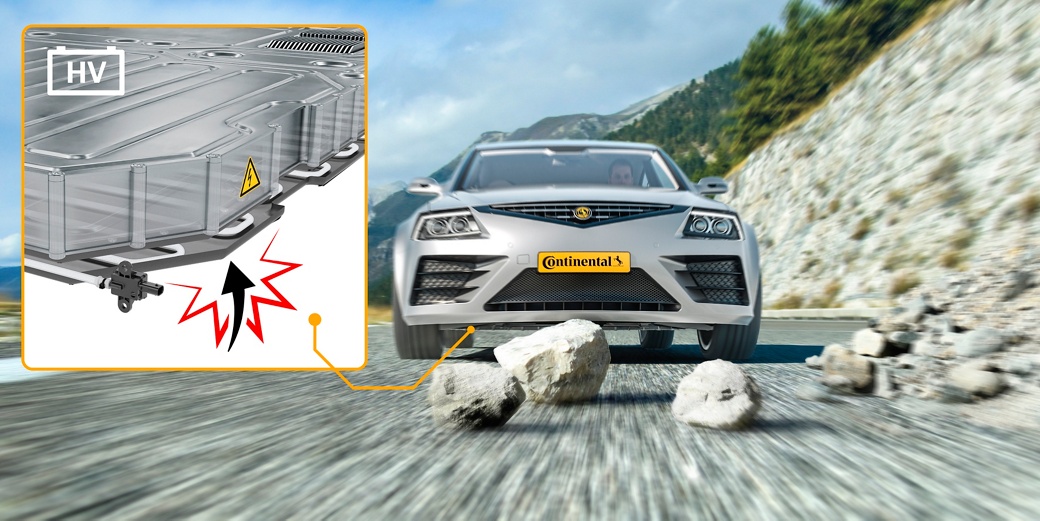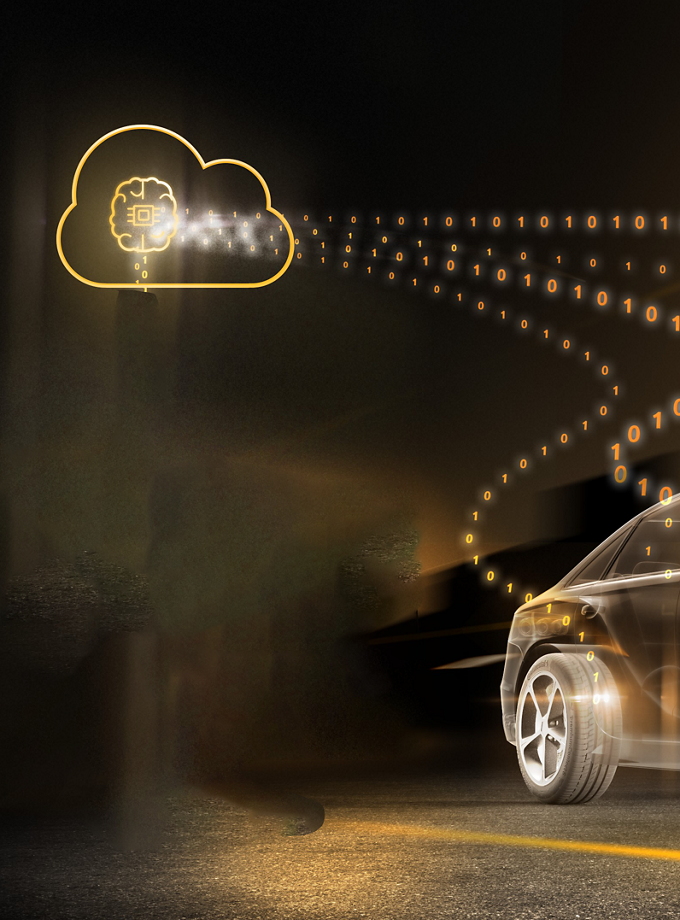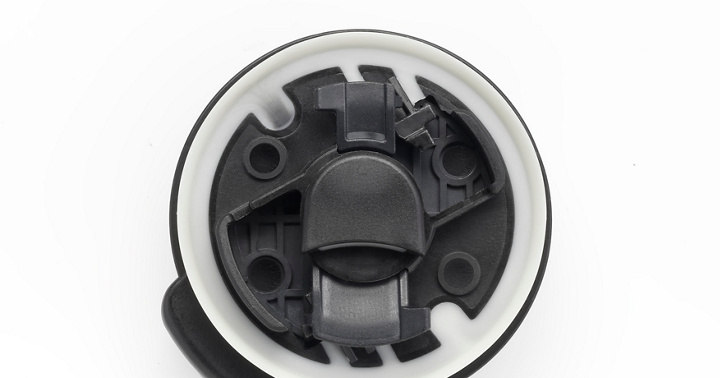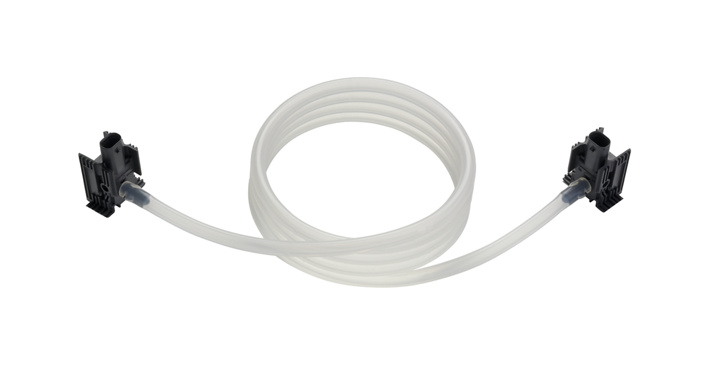Most electric vehicles feature a skateboard chassis architecture with the battery pack installed across the bottom of the vehicle. While this design greatly improves the center of gravity of the vehicle, it also increases the risk of battery damages. A collision, or objects flung under the vehicle could cause an impact on the battery leading to severe damage. Special protective measures are required to avoid or detect any intrusion.
For example, an intrusion to a traction battery could lead to short circuits with the risk of fire. The classical protection approach like metal floor plates come along with significant increased vehicle weight leading to a reduced driving range. Changing towards an active system, impact detection with lightweight parts can be realized. The measurement principle of the existing pedestrian protection system can be applied to the high-voltage battery. This allows to sense the type of impact and to warn the driver accordingly. The active system is robust enough to prevent unnecessary false alarms.
The Battery Impact Detection system can additionally be used to sense intrusions into the battery from the front or side by placing the tube of the sensor along the sides of the battery.
Algorithms calculated within the Airbag Control Unit detect critical events and activate the corresponding vehicle protection systems. These vehicle protection systems can contain fire preventive systems, driver information or other risk mitigation activities.
The system components are long-term proven and used in many series applications.

Benefits & Features
- Significant vehicle weight reduction possible
- Rapid recognition of every required impact situation to the battery
- Robust against misuse situations and environmental influences
- Additional system for maximum passive safety
- Cost-optimized design based on standard components
Technical Information
PSI5 interface
-40 °C up to 120 °C
Temperature range
Our Sensor Highlights
Do you want to know more?
*If the contact form does not load, please check the advanced cookie settings and activate the functional cookies for the purpose of contact management.





